NAM Works with FCC on Cybersecurity Labeling Program

A proposed cybersecurity-labeling program for Internet of Things devices is a good idea for manufacturers and consumers alike—but it should be undertaken in the right way, the NAM recently told the Federal Communications Commission.
What’s going on: “The cybersecurity certification and labeling program—which is still in its proposal stage—is called Cyber Trust Mark and would be voluntary,” Government Technology reports.
- Participating companies would be able to utilize the cybersecurity label to signify that their products “meet certain cybersecurity criteria like ‘unique and strong default passwords, data protection, software updates and incident detection capabilities,’ and other features identified by the National Institute of Standards and Technology.”
What we’re saying: It is imperative that the FCC—which would oversee the initiative—keep manufacturers involved at all stages of development, NAM Vice President of Domestic Policy Charles Crain told the commission late last week.
- “To drive robust participation in the program and enhance cybersecurity protections for consumers, the NAM respectfully encourages the FCC to work closely with industry to finalize criteria and procedures that remain voluntary but, when implemented, prove workable for manufacturers and trusted by consumers,” he said.
What should be done: There are six main actions the FCC should take to ensure the success of the program, Crain said.
- Collaborate with manufacturers as the program is being developed.
- Keep participation in the program voluntary.
- Ensure that the process of qualifying for and receiving a Cyber Trust Mark is “trusted, practical and flexible.”
- Make program criteria reflective of the varying degrees of risk that different products pose to consumers.
- Institute a legal safe harbor protecting manufacturers from liability.
- Educate consumers about the program and how they can protect themselves from cybersecurity threats.
The last word: “Manufacturers of IoT devices continue to take steps to enhance the cybersecurity measures implemented within these devices in order to secure them against threats and ensure that consumers are protected to the maximum extent possible,” Crain added.
- “The FCC’s proposed labeling program is thus an exciting opportunity for companies to show the progress they have made in this important arena, and for the industry to cohere around a set of practical, implementable best practices to protect the American people.”
NAM Works with FCC on Cybersecurity Labeling Program

A proposed cybersecurity-labeling program for Internet of Things devices is a good idea for manufacturers and consumers alike—but it should be undertaken in the right way, the NAM recently told the Federal Communications Commission.
What’s going on: “The cybersecurity certification and labeling program—which is still in its proposal stage—is called Cyber Trust Mark and would be voluntary,” Government Technology reports.
- Participating companies would be able to utilize the cybersecurity label to signify that their products “meet certain cybersecurity criteria like ‘unique and strong default passwords, data protection, software updates and incident detection capabilities,’ and other features identified by the National Institute of Standards and Technology.”
What we’re saying: It is imperative that the FCC—which would oversee the initiative—keep manufacturers involved at all stages of development, NAM Vice President of Domestic Policy Charles Crain told the commission late last week.
- “To drive robust participation in the program and enhance cybersecurity protections for consumers, the NAM respectfully encourages the FCC to work closely with industry to finalize criteria and procedures that remain voluntary but, when implemented, prove workable for manufacturers and trusted by consumers,” he said.
What should be done: There are six main actions the FCC should take to ensure the success of the program, Crain said.
- Collaborate with manufacturers as the program is being developed.
- Keep participation in the program voluntary.
- Ensure that process of qualifying for and receiving a Cyber Trust Mark is “trusted, practical and flexible.”
- Make program criteria reflective of the varying degrees of risk that different products pose to consumers.
- Institute a legal safe harbor protecting manufacturers from liability.
- Educate consumers about the program and how they can protect themselves from cybersecurity threats.
The last word: “Manufacturers of IoT devices continue to take steps to enhance the cybersecurity measures implemented within these devices in order to secure them against threats and ensure that consumers are protected to the maximum extent possible,” Crain added.
- “The FCC’s proposed labeling program is thus an exciting opportunity for companies to show the progress they have made in this important arena, and for the industry to cohere around a set of practical, implementable best practices to protect the American people.”
Manufacturing Leadership Awards Kick Off 20th Season
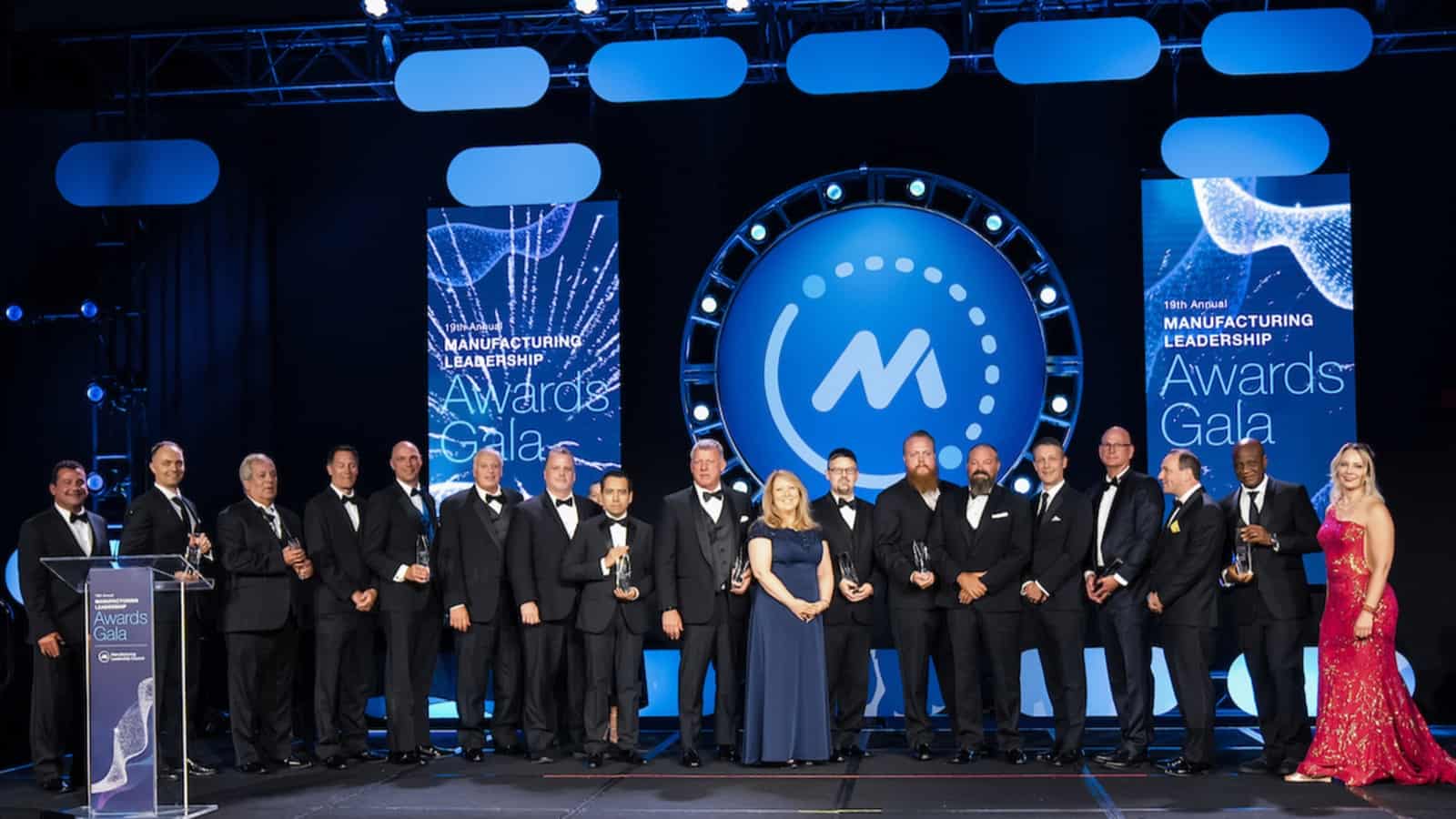
For two decades, the Manufacturing Leadership Awards have recognized outstanding manufacturing companies and their leaders for their groundbreaking use of advanced manufacturing technology. What started out in 2005 as a modest 50-person gathering in New Orleans has evolved into one of the industry’s most exciting celebrations.
This past June, the Manufacturing Leadership Awards Gala honored an impressive 163 projects and leaders, in front of an electrified crowd of 450 guests. The program’s growth is a testament to the momentum of Manufacturing 4.0 technologies and their success in creating performance improvements and boosting competitiveness.
With more manufacturers adopting digital and data-driven methods every day, there is still much to celebrate. The program’s 20th season is now open for nominations, with expectations running high for another amazing show in 2024.
A proud heritage: Past winners from the Manufacturing Leadership Awards include companies and leaders from nearly every industry, from 10-person shops to multinational enterprises, located all around the world.
- Each entry is reviewed by a judging panel made up of industry experts with extensive experience in technology transformation. The top-scoring projects are selected as category finalists, and the category winners are revealed at the awards gala.
- Finalists and winners report that the awards have helped them gain new customers, boosted employee morale and team camaraderie and encouraged their executive leadership to continue investing in digital technology initiatives.
- Since the program’s inception, more than 1,000 leaders and projects have been honored for their achievements.
A wide range of candidates: The awards program welcomes submissions from small and medium-sized enterprises, as judges look for the overall level of impact that projects have had on a company’s operations—not the dollar amount of their investments.
- If technology has measurably helped a company improve its operational performance, upskill employees or enter new business markets, those projects are excellent candidates for award nominations.
The categories: Over the years, the awards have encompassed an evolving list of categories, currently at nine for projects and two for individuals.
- Project categories include AI and Machine Learning, Collaborative Ecosystems, Digital Network Connectivity, Digital Supply Chains, Engineering and Production Leadership, Enterprise Integration and Technology, Operational Excellence, Sustainability and the Circular Economy, and Transformational Business Cultures.
- Individual categories include Digital Transformation Leadership, for established manufacturing operations executives who lead Manufacturing 4.0 initiatives, and Next-Generation Leadership, for up-and-coming operations leaders aged 30 or younger.
Get involved: All manufacturers in any location and of any organizational size are eligible and encouraged to apply. Program details, rules and instructions for how to submit a nomination are available on the MLC website. Entries are due Jan. 17, 2024.
NAM to Congress: Advance R&D Tax Fix Now
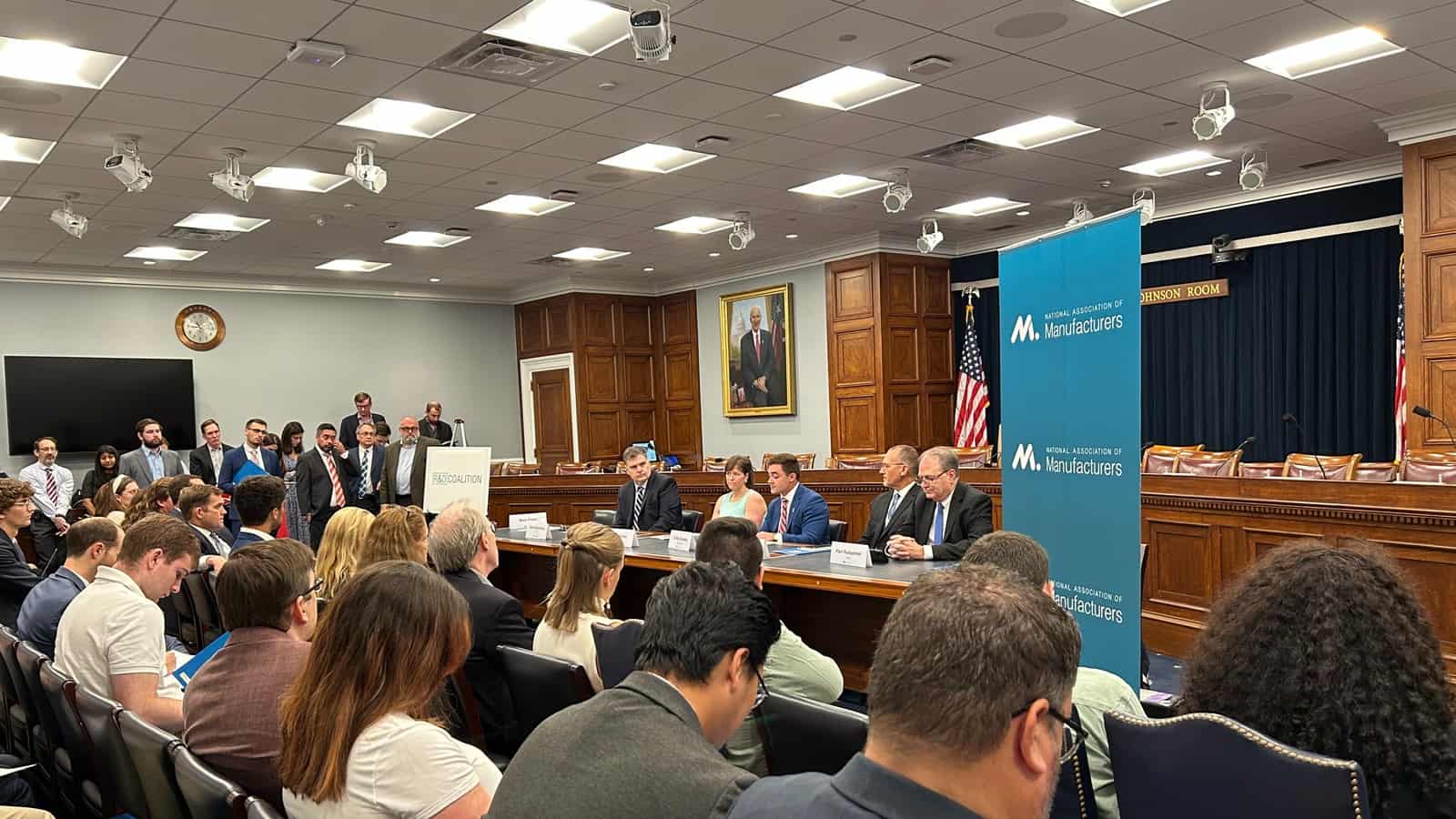
To restore a U.S. tax landscape that promotes manufacturing competitiveness, Congress should act quickly in advancing bicameral, bipartisan legislation that would ensure the tax code once again supports innovation.
That was the message from the NAM and several manufacturers to lawmakers last week.
What’s going on: The NAM and company leadership from manufacturers Westminster Tool and Brewer Science visited Capitol Hill last week to brief legislators on a harmful change to the tax treatment of research and development.
- The briefing was held by the NAM-led R&D Coalition in cooperation with the offices of Reps. John Larson (D-CT) and Ron Estes (R-KS) and Sens. Maggie Hassan (D-NH) and Todd Young (R-IN).
- Larson and Estes introduced the American Innovation and R&D Competitiveness Act in the House, while Sens. Hassan and Young introduced the American Innovation and Jobs Act in the Senate. These are the measures manufacturers are urging legislators to pass.
Why it matters: “We paid $26,679 per full-time employee in additional federal tax this past year” because of the change, Westminster Tool Chief Financial Officer Colby Coombs told lawmakers at the briefing.
- “This increased federal tax on R&D forced us to cancel a major aviation contract that would have added … new jobs in our community and forgo a significant capital investment. Without fixing this issue, in 2023, we expect an additional tax bill of almost $18,000 per employee,” he continued.
- Added Brewer Science Government Programs Director Doyle Edwards: “We have lost IP to China in the past, and fight[ing] that in the courts is a no-win situation. So the only way to win is to out-invent them. And that’s what we invest our money to do. However, with [the tax change] … we’re allowing China to actually catch up.”
The background: For nearly seven decades, manufacturers could deduct their R&D expenses fully in the year in which the costs were incurred. However, since the change last year, businesses must instead deduct these expenses over a period of years, making R&D more costly.
Legislative fix: To protect manufacturers’ R&D, jobs and competitiveness, Congress should move immediately on bipartisan legislation to restore R&D expensing.
- “R&D is the lifeblood of advanced technology development for our company, for our industry, but really for the nation,” Edwards continued. “And so our message is, we need your help. We need your leadership to resolve this policy issue.”
Take action: Learn more about what the NAM is doing to advocate for sound tax policy at our R&D action center.
A Footwear Company Strives for Circularity
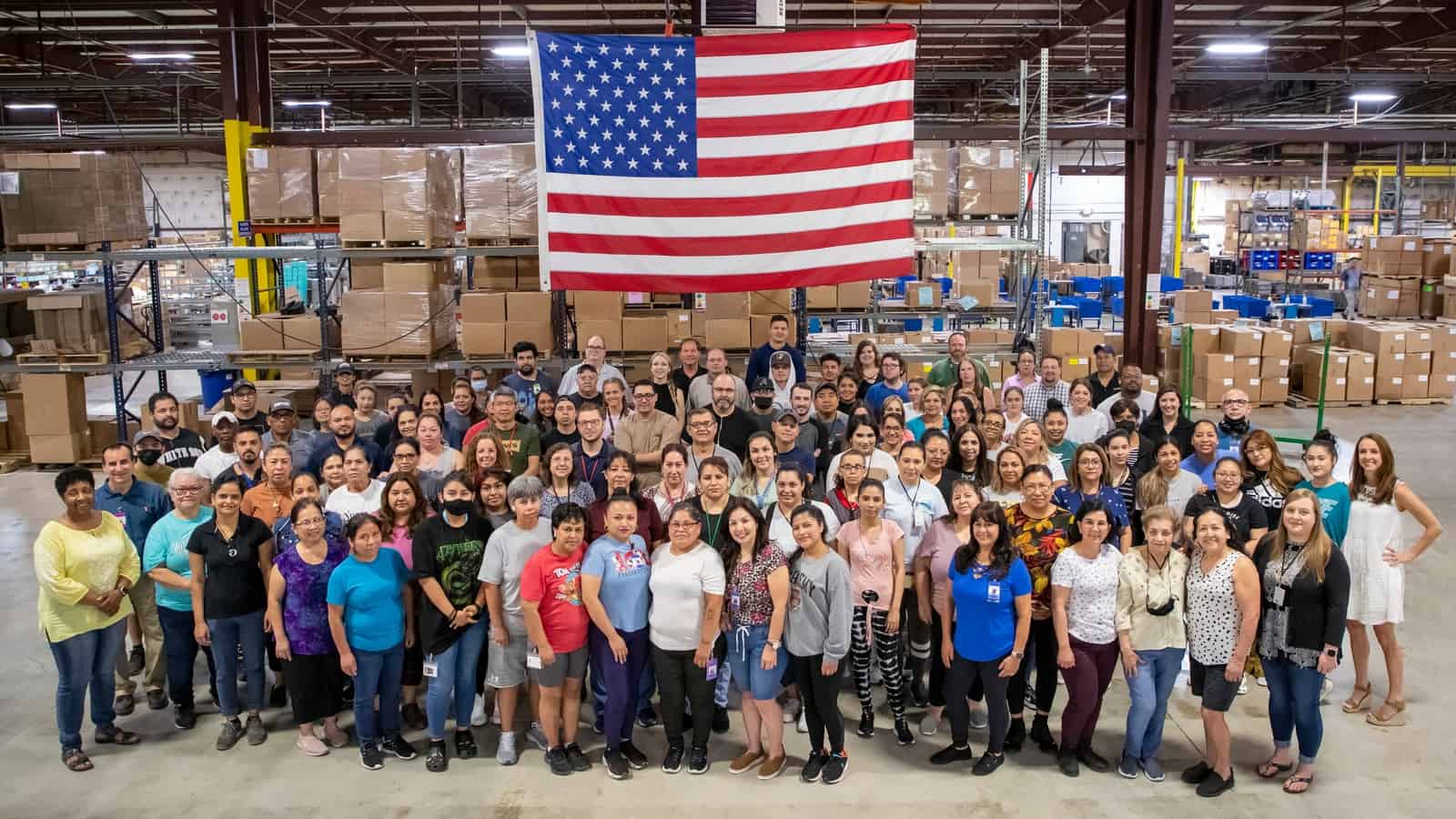
Within the footwear business, Okabashi is unique. The company, based in Buford, Georgia, is not only a family-owned company focused on sustainability, but also, according to the company’s leadership, producing part of the 1% of footwear still made in the United States.
For third-generation shoemaker Sara Irvani, this choice to build a sustainable and successful business in the U.S. was made possible only thanks to constant research and development.
The backstory: Irvani’s family started the company 40 years ago, and it always tried to reduce waste, both for the positive environmental impact as well as to improve its bottom line.
- “By developing closed-loop manufacturing processes, we were able to reuse some of the materials that otherwise might have gone to waste,” said Irvani. “That helped us stay more competitive—and from there we’ve developed innovations in processes and systems and materials that build on that foundation.”
The process: Okabashi’s sustainable processes extend throughout the product lifecycle—from incorporating recycled or biological elements (like soy) that ensure products last longer to preventing disposable waste to recycling post-consumer shoes into new ones.
- “When we look at sustainability of a product, we do it holistically—we look at what it’s made of, where it’s made, how it’s made, the lifecycle, the quality—and we’ve been able to innovate and develop so that our manufacturing process doesn’t create waste,” said Irvani.
- “Without R&D, we would not only be creating the additional cost basis of throwing away all those scraps, but we would also not be able to eliminate waste that is by default landfill or ocean bound.”
The circular economy: In the traditional, linear economic model, inputs go into production, a product reaches a consumer, the consumer uses the product and eventually throws it away. In contrast, Okabashi is working to perfect a circular economic model for its products, said Irvani.
- “If you are designing for circularity, you might use renewable and recycled resources, develop them into that same product with a level of quality that lasts longer, and when the customer is ready to move on, it can be remade into something else,” said Irvani. “That’s how the loop continues. When we talk about circularity, we’re creating that virtuous cycle.”
The homegrown production: Okabashi’s R&D efforts both help it stay in the United States by keeping costs down and require domestic production to work.
- “To remake and recycle a product into something new, you need to have local production,” said Irvani. “You can’t be sending things halfway across the world to be unmade and remade and sent back. That’s why R&D locally and domestically is so important, to help produce circular systems.”
The local benefit: Irvani is quick to point out that money spent on R&D creates significant financial benefits for local communities.
- “There’s a multiplier effect for commercially oriented R&D in terms of the jobs it can create and the impact on the local economy,” said Irvani. “You get a very strong return on investment for both the company and for the community.”
The global perspective: R&D is essential for U.S. companies competing with manufacturers abroad, Irvani added.
- “For U.S. manufacturing broadly, R&D is critical to stay at the forefront of the innovation curve,” said Irvani. “Unless we’re proactively investing and developing new and better ways of doing things, we won’t be globally competitive.”
The last word: “It is imperative industry and retail move toward a circular-based economy,” said Irvani. “That’s not something that just happens or falls from the sky. Consumers are demanding it, and R&D is our pathway to that future.”
Manufacturers Step into the Industrial Metaverse
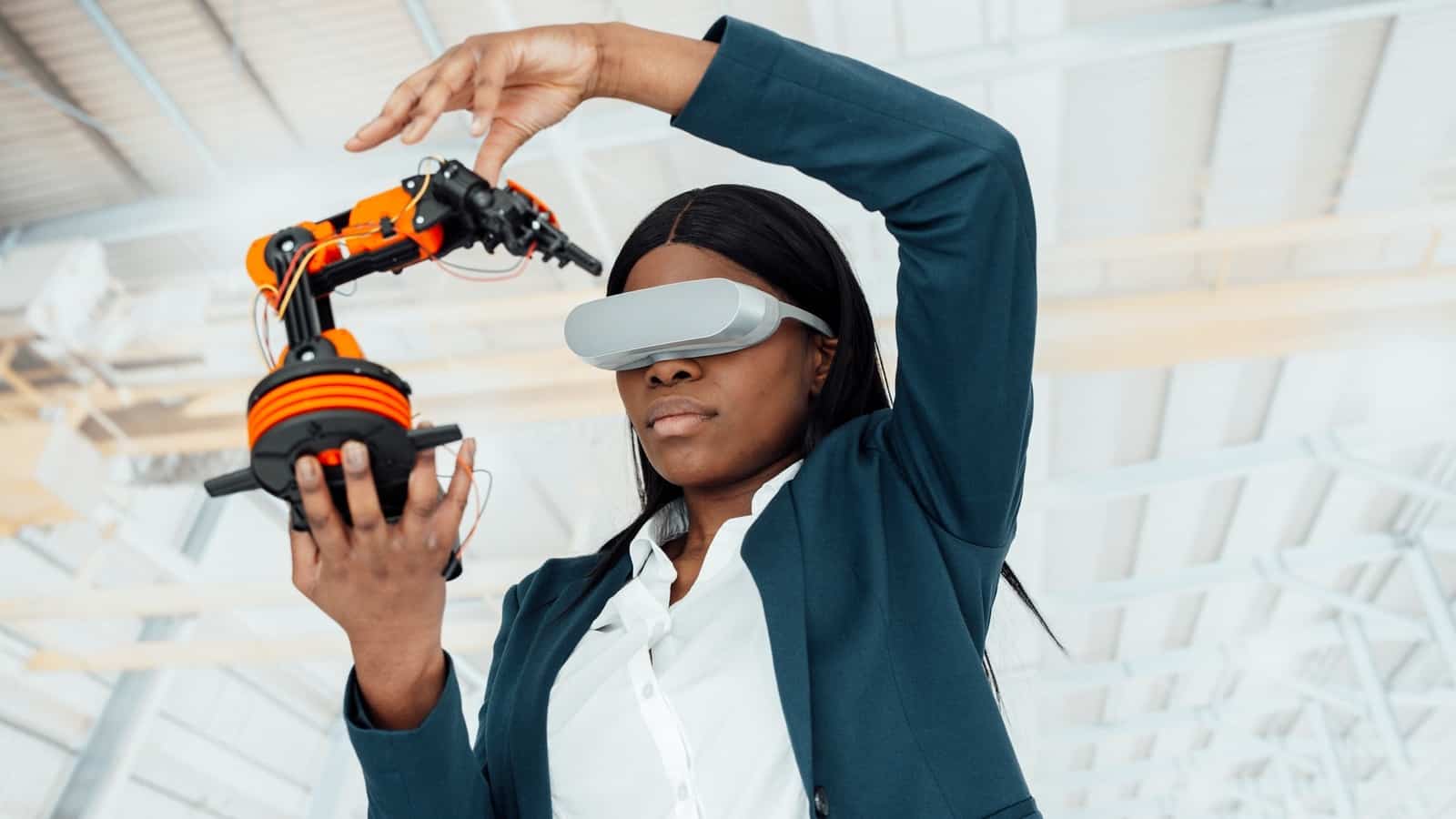
What exactly is the industrial metaverse? While the term sounds like something straight out of a science fiction movie, it’s already being used by manufacturers in the here and now. Put simply, the industrial metaverse is a collection of technologies that can create an immersive virtual or virtual/physical industrial environment.
The metaverse will contain virtual replicas of everything from complete factories down to individual components and parts, powered by evolving digital technologies like AI and cloud computing. As the metaverse develops, users will be able to access it from any internet-connected device, such as a smartphone, laptop or tablet, or using virtual reality headsets.
According to a new report released by the Manufacturing Leadership Council, the NAM’s digital transformation division, and Deloitte, 92% of manufacturing executives say they are experimenting with or implementing at least one metaverse-related use case. On average, the surveyed executives say they are running more than six.
How is it used? Manufacturers are using industrial metaverse technologies in four common areas: production, supply chain oversight, customer service and talent management.
- Production: Manufacturers are simulating key processes in order to evaluate them, creating virtual prototypes of processes or systems and creating simulated factories to optimize factory layout and setup.
- Supply chain: Other manufacturers are using the metaverse to track products and raw materials and to collaborate with suppliers.
- Customer service: Companies are also creating virtual showrooms and product demonstrations, which attendees can visit without leaving their own homes or offices.
- Talent management: Lastly, other companies are experiment with using the metaverse for immersive training, virtual plant tours and virtual recruiting and onboarding.
What are the benefits? Executives report that each of these use cases comes with significant benefits, including cost reductions. Respondents also said metaverse applications have improved employee attraction and retention.
- Immersive customer experiences and virtual aftermarket services, such as equipment service and maintenance, have also led to increased revenue, according to the survey.
The challenges: While the industrial metaverse offers many promising benefits, manufacturers are still finding some challenges, including:
- The high cost of metaverse technology and the cybersecurity protections it requires;
- A lack of employees with the right skills, along with the steep learning curve for those who must be trained; and,
- Insufficient digital infrastructure and other resources.
The solution: The report suggests that manufacturers can find success in the metaverse by building a culture of innovation, establishing leadership support and starting small by investing in a digital technology foundation.
The last word: All in all, manufacturing executives are confident that the industrial metaverse will transform their operations. Learning to understand and use the metaverse will soon be essential for companies seeking a competitive future.
Download the full report, “Exploring the Industrial Metaverse,” to learn more.
Tech Firms Squeeze More Out of AI Chips

Looking to make the most of the AI computer chips they have, technology companies are increasingly “turning to software that can squeeze more performance out of available chips and help reduce costs,” The Wall Street Journal (subscription) reports.
What’s going on: While larger firms are using hard-to-get graphics processing units to build multiple different AI models that “do things such as detect cybersecurity threats and help improve network performance,” other businesses are using central processing units to do similar tasks.
- CPUs aren’t as powerful as GPUs, but they are easier to find.
- And when “tuned with open-source software tools to get more performance out of them,” CPUs can help businesses meet their processing needs.
Boosting performance: As GPU demand continues to outpace supply, companies are using third-party software to squeeze additional performance from existing GPUs, too.
- One Israeli start-up installs optimization software on client GPUs to “automatically put idle computing power to use to gain better processing efficiency,” according to The Wall Street Journal.
- A Seattle-based startup “is betting that most businesses won’t want to deal with owning and managing an array of AI hardware … so it rents out access to processing power from cloud providers that it speeds up on customers’ behalf.”
Renting the cloud: Indeed, cloud-company giants can offer access to much-needed processing power “by renting it out as they do with computer services,” one source told the Journal.
How Can Companies Boost Morale?

After a global pandemic and amid considerable economic strain, worker morale may not be everything a company hopes. So what can leaders do to boost communication and restore a sense of excitement and purpose?
The Innovation Research Interchange—the NAM’s innovation division—recently published a whitepaper on morale building, drawing on copious existing research as well as consultations with leaders in a range of industries (from aerospace to consumer goods). Here are some of its key recommendations.
Senior leaders in the trenches: The best way to understand company morale (or its absence) is to go looking for it. In one notable case, FM Global Chief Science Officer Lou Gritzo spent a day working in each company lab, so he could understand where communication and cooperation needed improvement.
- Thanks to this experiment, Gritzo was able to “open lines of communication up and down the organization,” according to the IRI, leading to both an improved flow of information and greater comfort among lab staff in making independent decisions.
- “For others looking to try their hand at being a (not so) undercover boss, [Gritzo] recommends setting out rules of the road in advance,” the IRI paper notes. “The goal is to create a dialogue, not make guarantees that things will change. The change comes from the relationships built.”
Support for midlevel managers: Many participants in the IRI’s roundtables and interviews agreed that midlevel managers have only become more crucial in recent years—which explains why these managers are often very stressed.
- Amid the pressures of the pandemic, companies began offering more support and coaching for middle managers, according to earlier IRI research.
- One organization studied by the IRI and its research partner, Babson College, brought in coaches to work with managers—but not just for one-off sessions. “The external coaches were brought in multiple times during a one-year period in order to observe leadership styles and gave feedback openly,” which led to improved communication and greater autonomy among the managers.
Everyone an innovator: Another way to boost morale is to make sure great ideas are always recognized, no matter who comes up with them.
- At ICL Group, leaders devised a novel way to encourage innovative thinking: “an online platform that allowed anyone at ICL Group to propose an idea, have it reviewed by management, voted on by frontline staff and assigned to the appropriate team for implementation.”
- The platform has proved very popular, according to one senior leader, who said, “Everybody has just been blown away by how many ideas people have entered and [how many employees] continue to do it.”
Read the whole thing: Check out many more useful details and expert advice in the full whitepaper, which you can find here.
How Manufacturing 4.0 Got Its Name—and Why It Matters
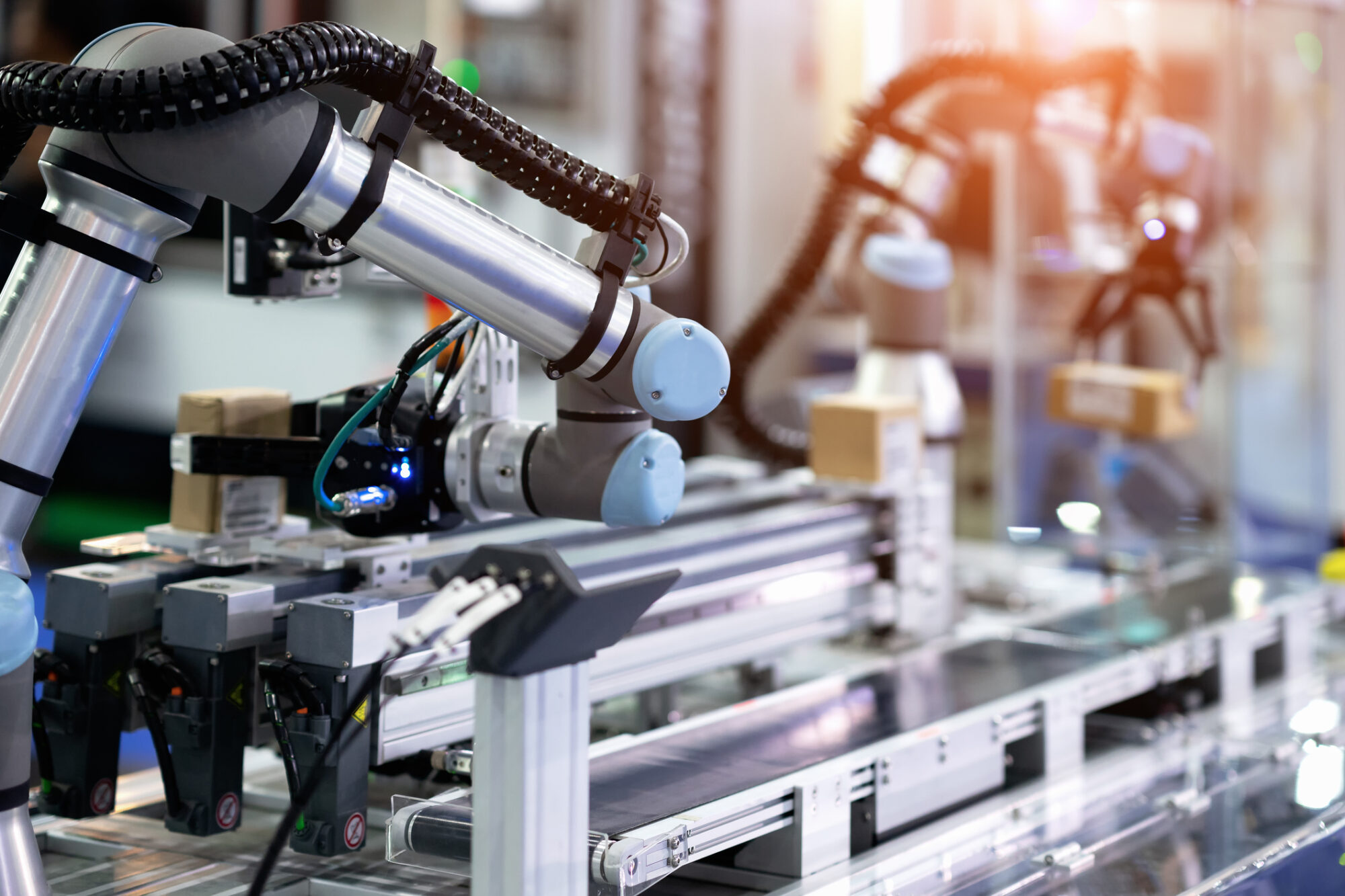
Flashback to 2015: “Hamilton” debuted on Broadway, millennials surpassed baby boomers as the largest U.S. generation and the term “Industry 4.0” was gaining traction in manufacturing circles. It was also when the Manufacturing Leadership Council created a conceptual framework called “Manufacturing 4.0.”
So what is the difference between Industry 4.0 and Manufacturing 4.0? While the terms may not sound all that distinct from each other, Manufacturing 4.0 represents the MLC’s commitment to a far-sighted, holistic approach to manufacturing’s tech-enabled metamorphosis—one that has served it well in over the past eight years.
The background: The 4.0 movement started in Germany in 2011 when the German ministries for education, research, economic affairs and energy developed a strategic initiative that would push forward the digital transformation of industrial manufacturing.
- They named this initiative Industrie 4.0. It featured an action plan that combined policy initiatives, public–private funding, strategies for technology implementation and the identification of business drivers and barriers.
The difference: For the MLC and its members, Manufacturing 4.0 is made up of transformations in three different arenas: technology, organization and leadership.
- Contrast this with Industry 4.0, which covers only technology topics—specifically nine pillars of technological innovation, which include autonomous robots, big data, cloud computing, IoT, cybersecurity, systems integration, simulation, AR/VR and additive manufacturing.
- “MLC, of course, covers all of these technologies, but, importantly, adds the dimensions of organizational and leadership change as part of its perspective on manufacturing’s digital transformation,” says David R. Brousell, the MLC’s founder, vice president and executive director.
MLC in action: While the MLC does provide member resources that focus on specific technologies and their uses in manufacturing operations, it also covers topics such as how leaders can prepare their workforce for digital transformation, how organizations should be structured to make business decisions based on manufacturing data and how leaders can ensure they set their teams up for digital success.
- Additionally, the annual Manufacturing Leadership Awards recognize not only high-performing digital manufacturing projects but also outstanding individuals who demonstrate both technological understanding and strong personal leadership.
M4.0’s continued evolution: Today, the MLC continues to use Manufacturing 4.0 as the overarching framework for its member companies’ activities.
- Its influence is apparent in the MLC’s annual Critical Issues Agenda, a member-created list of key business drivers and enablers of digital manufacturing.
- The agenda covers technological advances like smart factories and data analytics, alongside the organizational ecosystems that put such advances into operation—from the leaders who direct them to the cultures that make them succeed.
The Future of M4.0: As the MLC gets ready to set its 2023–2024 Critical Issues Agenda, it will continue to take a holistic approach to the technological changes sweeping the industry by recognizing the importance of people in making those transformations happen.
Go deeper: You can learn more about Manufacturing 4.0 by downloading the MLC’s white paper, Manufacturing in 2030: The Next Phase of Digital Evolution; reading a recent report, The Future of Industrial AI in Manufacturing; or attending its Aug. 30 virtual Executive Interview, Shifting from Disruption to Growth.
How Wabash Made Innovation Its Mission
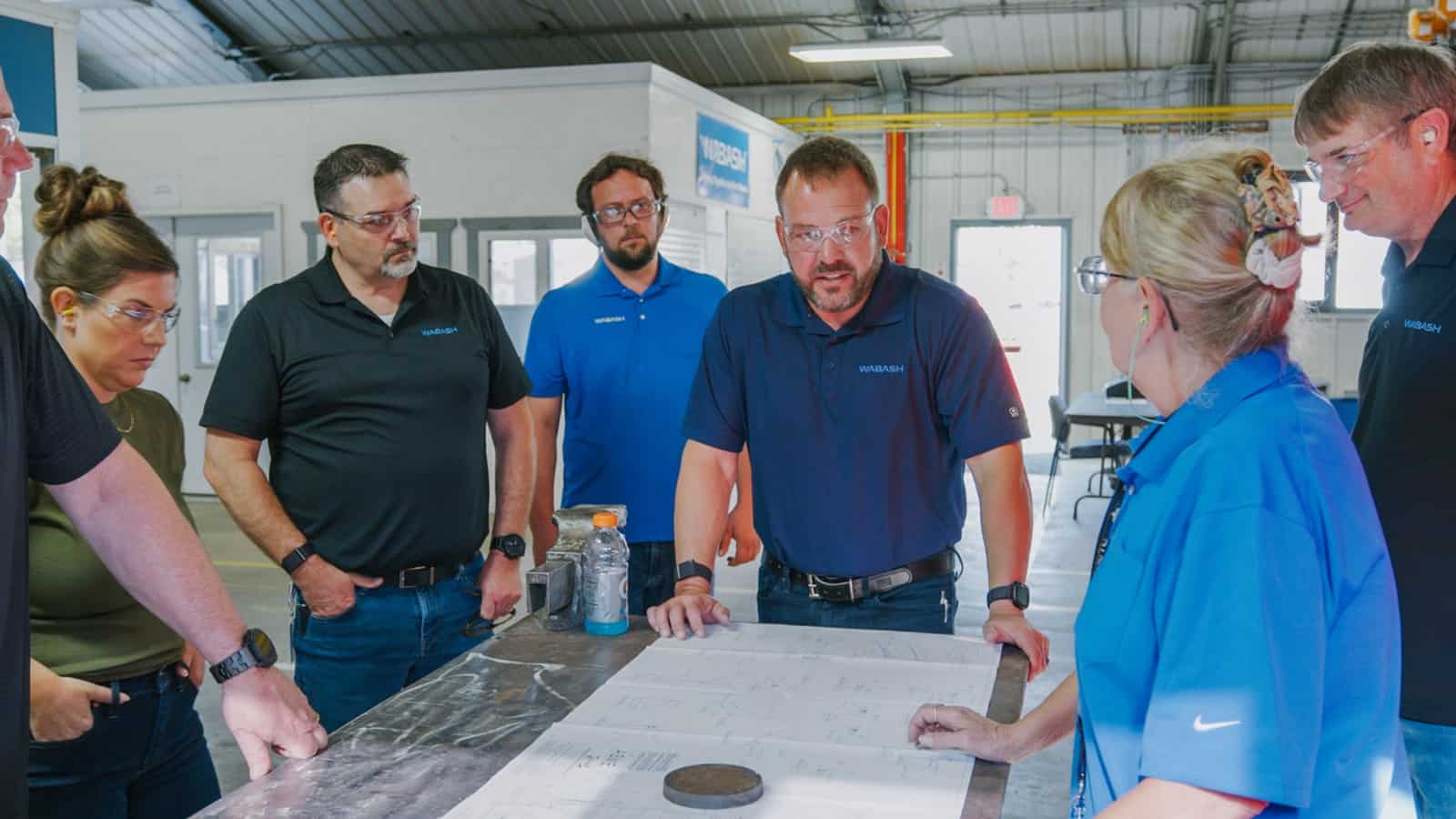
Innovation isn’t just one of many priorities at transportation systems manufacturer Wabash—it’s at the center of everything. Instead of having a traditional R&D function in the product development department, the company has reorganized its hierarchy so that innovation is considered in every major decision, from hiring to investments and more.
“It’s not possible to have innovation siloed in the engineering world; that wouldn’t allow us to achieve the scale of innovation that customers need,” President and CEO Brent Yeagy said.
As the manufacturing supply chain becomes increasingly intricate in a complex world, Wabash is staying ahead of the game. In a recent interview, Yeagy explained how the company does it.
The big picture: This “full reimagining” of the company occurred in response to broad forces reshaping the manufacturing industry, said Yeagy.
- Within the past decade, e-commerce has totally disrupted the logistics model of the previous 30 years, he pointed out.
- Meanwhile, digital technology has enhanced the speed and precision of the industry, which has also increased the complexity of its logistics needs.
- On top of that, the pandemic altered manufacturers’ thinking about lean inventories, lead times and the domestic supply chain infrastructure, sparking a system-wide transformation that isn’t over yet.
- And that’s all before we get to the possibilities of artificial intelligence, autonomous vehicles, and new sources of clean energy—all of which could bring profound and unpredictable changes to the industry.
The response: Watching these changes unfold, Yeagy and his team knew they had to take dramatic steps to keep up.
- “We restructured the entire organization away from standalone divisions,” prioritizing collaboration instead, Yeagy said. This involved “aggregating R&D and business development,” which had previously been spread out over 11 different departments.
- This shift also reflected a change in the company’s philosophy. Innovation could no longer be incremental, Yeagy determined, but had to be audacious.
The internal system: Such advances are only possible if the company has a flexible, fast-moving core of innovators who are always looking for the next opportunity, Yeagy told us.
- Instead of creating an innovation strategy that “sits on a shelf” for a year or more, Wabash updates its strategy on a weekly or monthly basis.
- While the company’s R&D and corporate development teams have strict objectives, they can also challenge the strategic direction and introduce fresh ideas—such as new technologies that might give the company an edge.
- This system also requires the right people for the job. Team members must have not only the technical qualifications for the work, but also the capacity to trust, collaborate and be vulnerable when sharing ideas, Yeagy said.
The successes: The company’s new structure has led to industry-leading innovations like Wabash’s subscription model, which allows clients to “subscribe” to a certain level of fleet capacity, instead of managing a fleet of trucks themselves.
- Wabash manages the fleet and maintenance, Yeagy explained, guaranteeing a certain capacity every day to its customers, while offering a range of rental models to suit their needs.
- In another victory for its innovative corporate development team, Wabash found a swift solution when it discovered it didn’t have sufficient distribution capabilities for aftermarket parts. It created a joint venture with a competitor company that had ample warehouse space across the country—going from the idea stage to nationwide operations in a mere six months.
Military influence: Yeagy’s service in the Navy shaped his leadership throughout the company’s transformation, he told us.
- “The military is based on a mission orientation,” he explained. “If everyone understands where we are supposed to go and why, it allows them to be agile and overcome obstacles” in the field, where the unpredictable happens.
- “Officers live to complete the mission by taking care of their people, preparing them mentally, physically, operationally,” and then allowing them to operate on their own. “We have to do that too,” he concluded.
A word of advice: Yeagy advises manufacturing leaders that truly experimental teams require “a safe place to fail and learn how to be comfortable with failure.” He admits that “It’s very hard to take a manufacturing company that doesn’t want to fail, and to teach them,” so leaders must strive to be “immensely” empathetic. It’s clear from speaking to Yeagy that this is his top priority.
